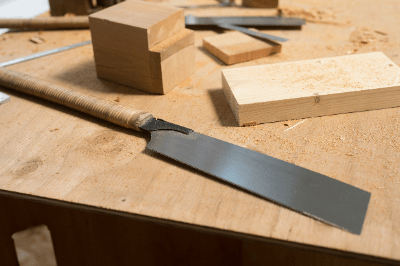What Is a Saw?

A saw is a tool equipped with a series of blades for cutting materials such as wood, plastic, and metal. The blades are attached to a handle and work by being pushed and pulled against the material, allowing for precise cuts, including curves and special shapes. Saws are essential in woodworking, metalworking, and other fields due to their efficiency, cost-effectiveness, and durability. Selecting the appropriate saw type based on the material and intended use is crucial.
Uses of Saws
Saws serve various purposes across different industries:
Woodworking
In woodworking, saws are indispensable for cutting and shaping wood, used in furniture making and part machining for both straight and curved cuts.
Construction
In construction, saws are vital for cutting wood and plywood, essential for assembling wooden house frameworks and finishing work, including precise adjustments for doors and windows.
Horticulture
For gardening and plant care, saws help in pruning, shaping, and removing unwanted branches, contributing to the aesthetic and health of garden trees.
DIY Projects
DIY enthusiasts use saws for home repairs, renovations, and furniture making, where precision and clean cuts are paramount.
Principle of Saws
Saw blades operate on the principle of teeth cutting through material. The teeth’s design, including their shape and pitch, varies according to the saw type and intended use. The cutting process involves the teeth biting into the material and moving forward to shape it as desired, with a design that facilitates the removal of chips and powder for smooth operation. Proper pressure and technique are important to ensure efficient cutting.
Types of Saws
Various saws are available, each suited to specific tasks.
Double-Edged Saw
This type of saw features blades on both the top and bottom, with each side designed for cutting in different directions relative to the wood grain, requiring careful use to avoid damage.
Electric Saw
Powered by an electric motor, this type of saw can cut through metal and plastic with high efficiency.
Tenon Saw
Known for precision, these single-bladed saws are reinforced on one side, allowing for smooth finishes.
Jigsaw
The fine thread-like blade of the jigsaw is ideal for cutting intricate curves and performing precision work, popular in model making and crafts.
Other Information on Saws
Features of Horizontal Saw Blades
Horizontal saw blades have trapezoidal teeth designed for cutting across wood fibers, with specific angles for cutting and edge formation to enhance efficiency.
Clamshell Saws
Claws on the saw blade reduce friction and facilitate sawdust ejection, with the width of the clam determining its suitability for different lumber conditions.
Sharpening
Sharpening dull saw blades involves using a precision file and following specific techniques to restore the blade’s sharpness, with automatic alignment available for consistent results.